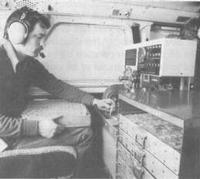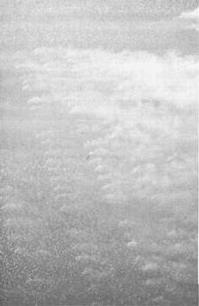


Chapter 4
I Management Of Native Forests
II Plantations-high Productivity Resources
III Protecting The Resource
i From fire
ii From biological attack
IV Harvesting The Resource
V Solid Wood And Its Processing
VI Minor Forest Products
VII Reconstituted Wood Products
VIII Pulp And Paper
IX Export Woodchips
X Future Directions
XI Acknowledgements
References
Index
Search
Help
Contact us

From fire (continued)
Prescribed burning was also introduced into pine plantations in south-east Queensland from the early 1970s. The treatment is applied when the trees are about 8-10 years old, to dispose of litter and grass. Ground ignition was originally employed but ignition from helicopters is now also used. Some 10-15 000 ha are burned annually.

The first system to give early warning of a high fire danger period was developed in Western Australia in 1935 and used weather forecast data together with a measure of fuel flammability obtained from daily measurements of the moisture content of a standard thin cylinder of wood.[32] In other States the fire danger has been measured since the 1960s as an index, developed by McArthur,[33] which combines the effects of temperature, relative humidity, wind speed, last rainfall and number of days since rain, together with a drought factor. There are some minor differences in the calculation of the index between the States. A system similar to McArthur's was later introduced to Western Australia. Early warning of fire danger periods has enabled more effective use to be made of the spotter aircraft which now supplement the lookout systems in all States.
Firefighting technology itself has changed significantly over the past twenty or so years, with increasing emphasis being given to the speed with which the fire can be attacked. The expansion of forest road systems since the Second World War has helped in this regard. The large tankers introduced in the late 1940s and 1950s still have their place, but small and faster vehicles and helicopters are being increasingly used to move teams quickly to new fires. The introduction of a combined rake and hoe from USA in 1952 and its widespread adoption has increased the effectiveness of ground crews. Aircraft were first used to drop water on fires by the Forests Commission of Victoria in 1939. Agricultural aircraft and medium helicopters are now widely used in southeastern Australia to attack small fires in remote forests and for close support of ground crews. Retardants and gelling agents are added to improve the effectiveness of the water. Unlike North America very little use has been made of large aircraft, although a recent study[34] has confirmed the favourable cost-benefit of a large aircraft for Victoria.
Airborne forward-looking infra-red fire detection was first used in Australia in 1980 by the Forests Commission of Victoria, which collaborated with Royal Melbourne Institute of Technology in the construction of a low-cost unit for use in both fixed-wing aircraft and helicopters to enable fire fronts to be located through heavy smoke. In the disastrous Ash Wednesday fires of 1983 an airborne infra-red scanner, developed by CSIRO Division of Mineral Physics, was used by the Forests Commission of Victoria. This versatile unit, which enables whole fire areas to be mapped, was reported to have helped significantly in bringing a major fire under control{35} and two similar units have now been obtained by the National Safety Council for fire control and other use.
Organisations in Australian Science at Work - CSIRO Division of Mineral Physics; Forests Commission of Victoria; National Safety Council; Royal Melbourne Institute of Technology
 |
Australian Academy of Technological Sciences and Engineering |  |
© 1988 Print Edition page 209, Online Edition 2000
Published by Australian Science and Technology Heritage Centre, using the Web Academic Resource Publisher
http://www.austehc.unimelb.edu.au/tia/218.html